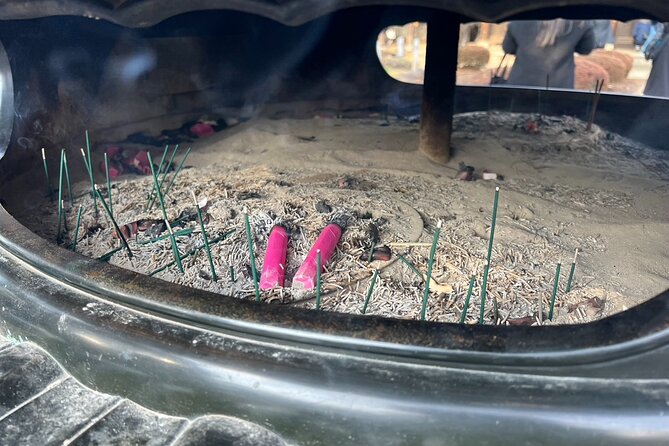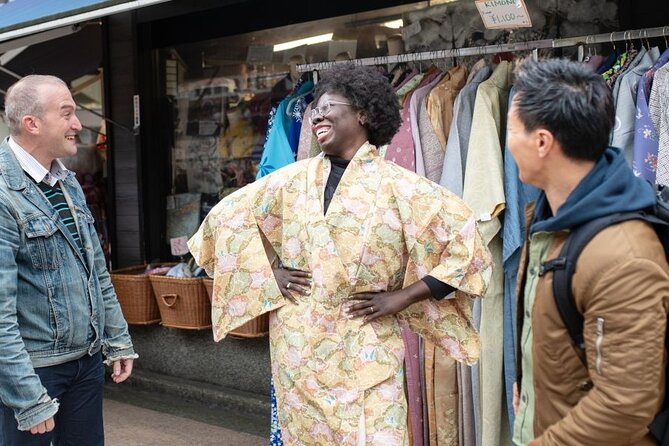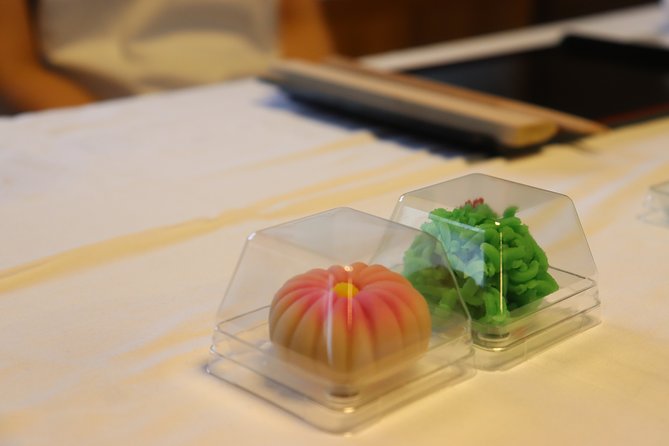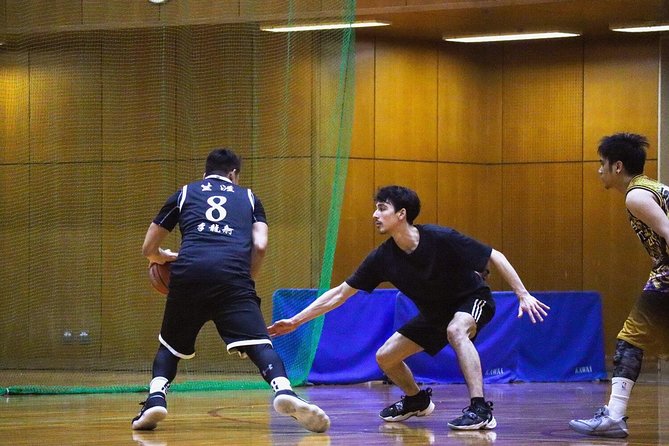Tsukiji and Asakusa – 2 Major Complexes
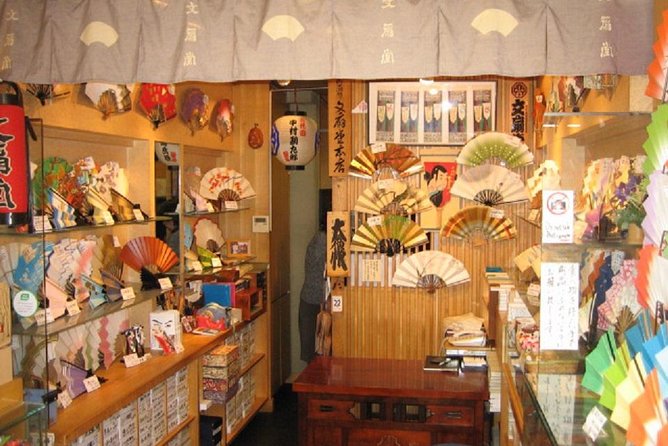
As visitors step into the vibrant cityscape of Tokyo, the juxtaposition of tradition and modernity becomes palpable at the juxtaposed sites of Tsukiji and Asakusa.
The allure of these two major complexes lies in their ability to transport guests through time, offering a glimpse into the heart of Japan’s cultural tapestry.
From the serene Tsukiji Hongwan-ji Temple to the iconic Asakusa Kaminarimon Gate, each location holds a unique story waiting to be unraveled, promising an immersive experience that goes beyond mere sightseeing.
More nearby cooking classses we've reviewed
Key Points
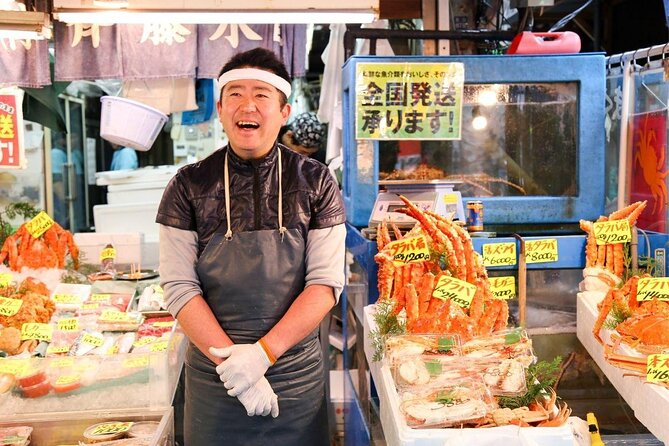
- Tsukiji Complex offers a blend of traditional Japanese and Indian architecture, representing Buddhism’s legacy.
- Tsukiji Outer Market is a culinary hub with fresh seafood, street food, and local treasures.
- Tsukiji Fish Market provides a unique sushi tasting experience and insight into seafood commerce.
- Asakusa Complex features the iconic Kaminarimon Gate, Senso-ji Temple, and Nakamise Shopping Street for cultural exploration.
It's also worth checking out some other tours and experiences nearby.
Tsukiji Hongwan-ji Temple
When does Tsukiji Hongwan-ji Temple open to visitors for exploration and reflection?
The temple, known for its stunning Buddhist architecture and significant cultural value, welcomes visitors daily from 9:00 am to 5:00 pm. This serene sanctuary offers a peaceful retreat in the bustling city of Tokyo, Japan.
The architecture of the temple reflects a blend of traditional Japanese and Indian styles, making it a unique site for both spiritual contemplation and architectural appreciation. Visitors can explore the intricate details of the temple, learn about its rich history, and take in the tranquil atmosphere that permeates the grounds.
Tsukiji Hongwan-ji Temple stands as a testament to the enduring legacy of Buddhism in Japan and is a must-visit for those seeking a moment of tranquility amidst the city’s vibrant energy.
Tsukiji Outer Market Exploration

Explore the vibrant Tsukiji Outer Market, a bustling hub of culinary delights and local treasures in Tokyo, Japan, following your visit to the serene Tsukiji Hongwan-ji Temple.
The market is a haven for foodies and visitors seeking to enjoy the local culture. Wander through the narrow lanes filled with an array of stalls offering fresh seafood, traditional snacks, and unique souvenirs.
Engage in street food tasting, sampling popular delicacies like sushi, sashimi, and tempura prepared right before your eyes. The lively atmosphere and the aromas wafting from the stalls create a sensory experience unlike any other.
Don’t miss the opportunity to interact with vendors, learn about their products, and savor the authentic flavors of Tokyo.
Tsukiji Fish Market Visit
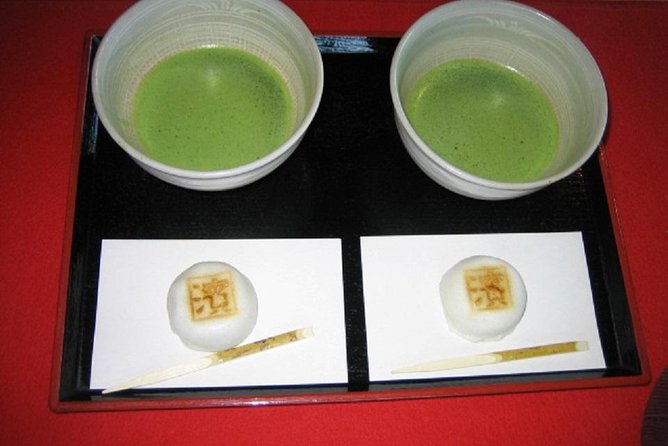
Enjoy the vibrant atmosphere of Tsukiji Fish Market, a bustling epicenter of seafood trade and culinary delights in Tokyo, Japan.
Visitors can witness the famous morning auction where fresh catches are sold to vendors. The auction is a fast-paced spectacle, showcasing the intense competition for the best seafood.
After the auction, indulge in a sushi tasting experience like no other. Sample a variety of sushi made from the freshest ingredients available at the market. This hands-on experience allows visitors to taste the essence of Japanese culinary tradition.
The Tsukiji Fish Market visit offers a unique insight into the world of seafood commerce and provides a memorable gastronomic journey for all who explore its bustling aisles.
Asakusa Kaminarimon Gate

After exploring the vibrant Tsukiji Fish Market, visitors can journey to the iconic Asakusa Kaminarimon Gate, a symbol of cultural heritage and spiritual significance in Tokyo, Japan. The gate, also known as the Thunder Gate, is the entrance to the Senso-ji Temple and stands proudly with its traditional architecture and vibrant red color, welcoming guests to the religious complex beyond. The gate’s intricate details and massive size make it a must-see attraction for those interested in Japanese history and architecture. As visitors pass through the Kaminarimon Gate, they are greeted by a bustling street leading up to the Senso-ji Temple, filled with shops selling traditional snacks and souvenirs, creating a lively atmosphere that captures the essence of old Tokyo.
| Features | Description |
|---|---|
| Traditional architecture | Reflects Japanese heritage |
| Thunder gate | Symbolizes spiritual significance |
| Intricate details | Showcase historical craftsmanship |
| Vibrant red color | Eye-catching and symbolic |
| Historic significance | Key entry point to Senso-ji Temple |
Senso-ji Temple Experience
The Senso-ji Temple offers visitors a serene and immersive experience into the rich cultural heritage of Japan. This ancient Buddhist temple, located in Asakusa, is Tokyo’s oldest temple and holds great spiritual significance for the locals.
Visitors can participate in traditional rituals like purifying their hands and mouths at the chozuya water pavilion before approaching the main hall. The temple grounds are adorned with vibrant red lanterns and intricate architectural details, creating a peaceful atmosphere for reflection and prayer.
Many visitors also seek out the temple’s fortune-telling stalls and omikuji (paper fortunes) for insights into their futures. Overall, a visit to Senso-ji Temple provides a glimpse into Japan’s traditional customs and beliefs.
Nakamise Shopping Street
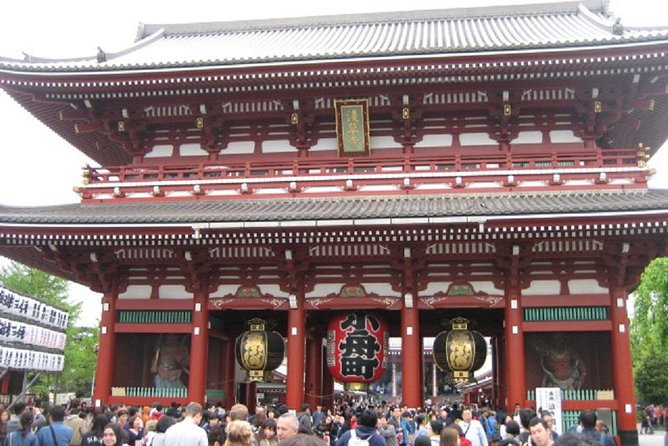
Visitors strolling from the Senso-ji Temple are greeted by the vibrant Nakamise Shopping Street, a bustling marketplace brimming with traditional souvenirs and local delicacies.
| Traditional Souvenirs | Local Delicacies | Atmosphere |
|---|---|---|
| – Wooden kokeshi dolls | – Senbei (rice crackers) | – Energetic and lively |
| – Origami crafts | – Ningyo-yaki (doll-shaped cakes) | – Aroma of street food |
| – Hand-painted fans | – Melonpan (sweet buns) | – Colorful decorations |
Nakamise Street offers a unique shopping experience where visitors can find authentic Japanese gifts while savoring delicious treats. The vibrant atmosphere, filled with the scent of local delicacies, adds to the charm of exploring this historic street.
Asakusa Cultural Insights
Enjoy the rich cultural heritage of Asakusa through insightful experiences and interactions. Asakusa is a vibrant district in Tokyo known for its traditional customs and festive events.
Visitors can explore the Senso-ji Temple, where they can witness rituals and ceremonies that have been carried out for centuries. The area around the temple is filled with shops selling traditional goods, providing a glimpse into Japan’s past.
Don’t miss the chance to participate in events like the Sanja Matsuri, one of Asakusa’s biggest festivals, celebrating the three founders of Senso-ji. By engaging with these cultural elements, travelers can gain a deeper understanding of Japan’s history and traditions during their visit to Asakusa.
Sumida River Cruise
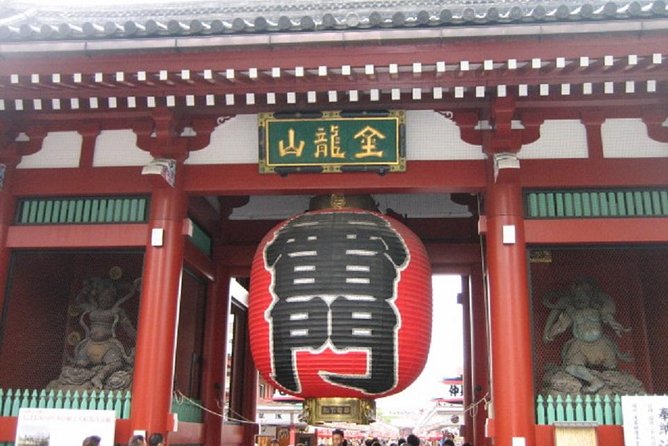
Engage in a scenic Sumida River Cruise to further explore the cultural richness of Tokyo beyond Asakusa. Enjoy stunning river views and the soothing ambiance of a boat ride along the Sumida River. This cruise offers a unique perspective of Tokyo’s skyline, with iconic landmarks like the Tokyo Skytree and Asakusa’s traditional architecture passing by.
Feel the gentle breeze as you glide under historic bridges, enjoying the city’s vibrant atmosphere. Whether you choose a daytime or evening cruise, the experience promises a tranquil journey through Tokyo’s heart.
Don’t miss this opportunity to witness the city from a different angle and appreciate its beauty from the water. A Sumida River Cruise is a must for anyone seeking a memorable Tokyo exploration.
Frequently Asked Questions
Is There Any Specific Dress Code or Attire Required for Visiting the Tsukiji Hongwan-Ji Temple and Asakusa Kaminarimon Gate?
When visiting temples in Tokyo like Tsukiji Hongwan-ji and Asakusa Kaminarimon Gate, it’s essential to respect cultural customs. Tourist etiquette suggests wearing modest attire covering shoulders and knees. This shows reverence for sacred places and enhances the temple visit experience.
Are There Any Restrictions on Photography or Videography at the Tsukiji Fish Market and Senso-Ji Temple?
Photography etiquette at the Tsukiji Fish Market and Senso-ji Temple is crucial. Tourists should respect cultural norms by asking before taking photos, especially of individuals or religious sites. Proper behavior enhances market interactions and shows cultural respect.
Are There Any Specific Dietary Restrictions or Preferences That Can Be Accommodated for Lunch During the Tour?
For lunch during the tour, dietary restrictions like vegetarian options and allergies can be accommodated. Customized menus are available for food preferences. Most dietary needs can be met, ensuring an enjoyable dining experience.
Is There Any Free Time Allotted for Shopping or Exploring on Our Own at the Nakamise Shopping Street?
There is free time for exploring options at the Nakamise shopping street. Shopping opportunities are available during this period. Visitors can enjoy browsing and purchasing souvenirs or local goods before continuing the tour.
What Happens in Case of Unexpected Changes in Weather Conditions During the Sumida River Cruise Portion of the Tour?
If unexpected weather changes occur during the Sumida River cruise, safety measures will be in place. The tour operator will adjust the route or have emergency plans in place. Weather precautions are taken to ensure a safe and enjoyable experience.
Recap
To sum it up, the guided tour of Tsukiji and Asakusa offers a perfect blend of tradition and culture in the heart of Tokyo.
From the serene temples to the bustling markets, you will experience the rich history and vibrant atmosphere of Japan.
With included guide fees, lunch, and private transportation, this tour provides a seamless and personalized exploration of these iconic landmarks.
Don’t miss out on this unforgettable journey through Tokyo’s cultural heritage.

